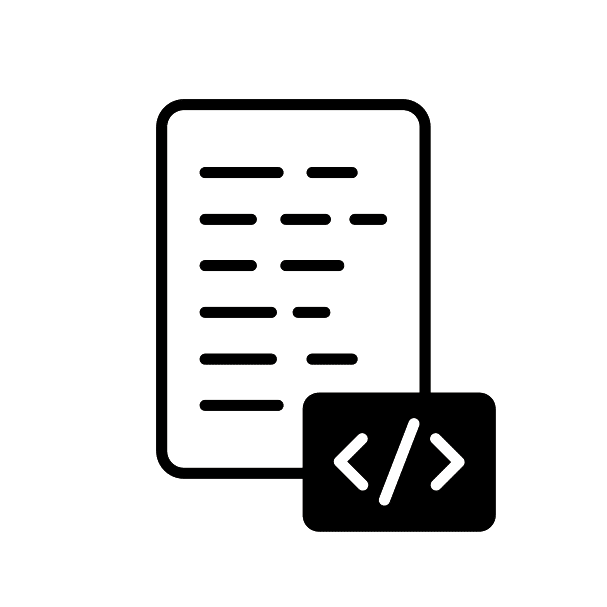Become a master at crafting engaging websites with HTML, CSS, and Javascript.

Our teachers and tutors graduated from top universities








Overview

Customized curriculum
We'll find a tutor who can make sure you're prepared for the A-Level Maths exam with customisable lessons catered to fit your needs.

Flexible
Take lessons only when you need them—as little or as many as necessary until you feel confident.

Private lesson
No need to accommodate other students. Learning is customised your perfect pace and difficulty so you are always improving.
About Web Development Languages
HTML, CSS, and JavaScript are the cornerstone technologies of web development, each playing a vital role in shaping the online experience. HTML, or HyperText Markup Language, serves as the structural foundation, organizing web content through elements like headings, paragraphs, and lists.
CSS, also known as Cascading Style Sheets, takes on the role of the web’s artistic director, responsible for the visual aesthetics of HTML elements. It controls aspects such as colors, fonts, and layout, ensuring websites adapt gracefully to diverse devices and screen sizes.
JavaScript acts as the dynamic conductor, enabling web interactivity by manipulating HTML and CSS in real-time. It empowers features like instant updates, form validations, and dynamic content changes, working on both the client side for browser interactions and on the server side with frameworks like Node.js.
In the realm of web development, there’s a vast array of languages and frameworks. Backend languages like PHP, Python, and Ruby offer various server-side capabilities. Frontend frameworks such as Angular, React, and Vue simplify the development of complex applications. SQL comes into play for database interactions, facilitating data storage, retrieval, and manipulation.
Proficiency in HTML, CSS, and JavaScript marks the starting point for budding web developers. These languages provide the foundational bedrock upon which advanced tools and languages are built. Understanding their seamless integration is essential for navigating the ever-evolving digital landscape.
Description
Attain expertise in responsive design, ensuring your websites display flawlessly on various screen sizes. Delve deeper into advanced topics, such as API integration and version control, to enhance your website’s functionality. Additionally, this course provides valuable insights into web performance optimization and accessibility, enabling you to create efficient and inclusive web applications that cater to diverse users.
What you will learn
- Skillful use of HTML, CSS, and introductory Javascript
- Familiarity with CSS positioning techniques: relative, static, absolute, fixed
- Understanding of the Document Object Model (DOM)
- Expertise in implementing responsive web design principles
Requirements
- Ages 9-18
- Dedicated beginners in programming
- Interested in creating websites
Student FAQs About Web Development
Front-end development focuses on creating the user interface elements that users directly interact with in web browsers, including HTML, CSS, and JavaScript. In contrast, back-end development deals with server-side operations and databases that support the front end. Common back-end programming languages include PHP, Ruby, and Python.
Responsive design is an approach that automatically adapts a website’s layout and content presentation based on the screen size and device orientation. It primarily relies on CSS, sometimes supplemented by JavaScript, to ensure web content remains visually appealing and fully functional across various devices and screen sizes.
Frameworks are pre-built code libraries that provide developers with powerful tools to simplify complex tasks in web development. Whether it’s achieving a consistent user interface with Bootstrap or building interactive client-side applications using Angular or React, frameworks offer pre-written code that speeds up development while following best practices. They are invaluable for reducing development time, improving code quality, and fostering collaboration among developers.
APIs, or Application Programming Interfaces, serve as connectors that enable different software applications or web services to communicate and share data or functionality. In web development, APIs facilitate connections between websites and external services or systems, enabling tasks such as data retrieval, payment processing, or integration with third-party applications. They act as intermediaries, ensuring smooth interactions between distinct software components, enhancing a website’s overall functionality and capabilities.
Server-side rendering involves generating the complete HTML content of a web page on the server in response to a user’s request. In contrast, client-side rendering constructs the page within the user’s web browser using JavaScript. Each approach has its advantages and disadvantages, influencing factors such as initial page load speed, search engine optimization (SEO), and interactivity. Server-side rendering is typically faster for initial page loads, while client-side rendering offers a more interactive user experience.
Website performance significantly affects user experience. A slow-loading website can frustrate users, lead to high bounce rates, and negatively impact search engine rankings. Performance optimization involves employing various techniques, including image and video compression, lazy loading to defer resource loading until necessary, and efficient management of CSS and JavaScript to reduce page load times.
Web accessibility involves designing and developing websites to ensure usability for all individuals, including those with disabilities. Core principles of web accessibility include providing alternative text for images to assist visually impaired users, enabling keyboard navigation for those unable to use a mouse, and ensuring compatibility with screen readers for individuals with visual or cognitive impairments. These principles aim to create an inclusive and accessible web environment for a diverse range of users.
Pricing
No hidden fees. Cancel any time.
Get a free trial to find your perfect tutor before you commit.
Online Tutoring
-
Personalized lesson plans
-
Paid Zoom account
-
Lesson reports after every lesson
-
SMS & email appointment reminders
-
Dedicated customer support
-
No monthly commitment
-
24 hour free cancellation
Or call us at +81-120-963-638
Home Tutoring
-
Personalized lesson plans
-
Lesson reports after every lesson
-
SMS & email appointment reminders
-
Dedicated customer support
-
No monthly commitment
-
24 hour free cancellation
-
Transportation included
Or call us at +81-120-963-638
How it works
1
Request a tutor
Let us know your goals and age range. We'll figure out a plan to help get you there.
2
Match with a tutor
We'll recommend you a tutor based on your needs and goals, or you can request a specific tutor.
3
Start a free trial
Experience a free trial lesson with your new tutor and see if your learning style matches.
4
Keep it up!
If everything went well, sign up to keep going! You can choose the pacing of the lessons
Need more info?
Let's talk.
Leave your phone number, and we’ll call you back to discuss how we can help you.



